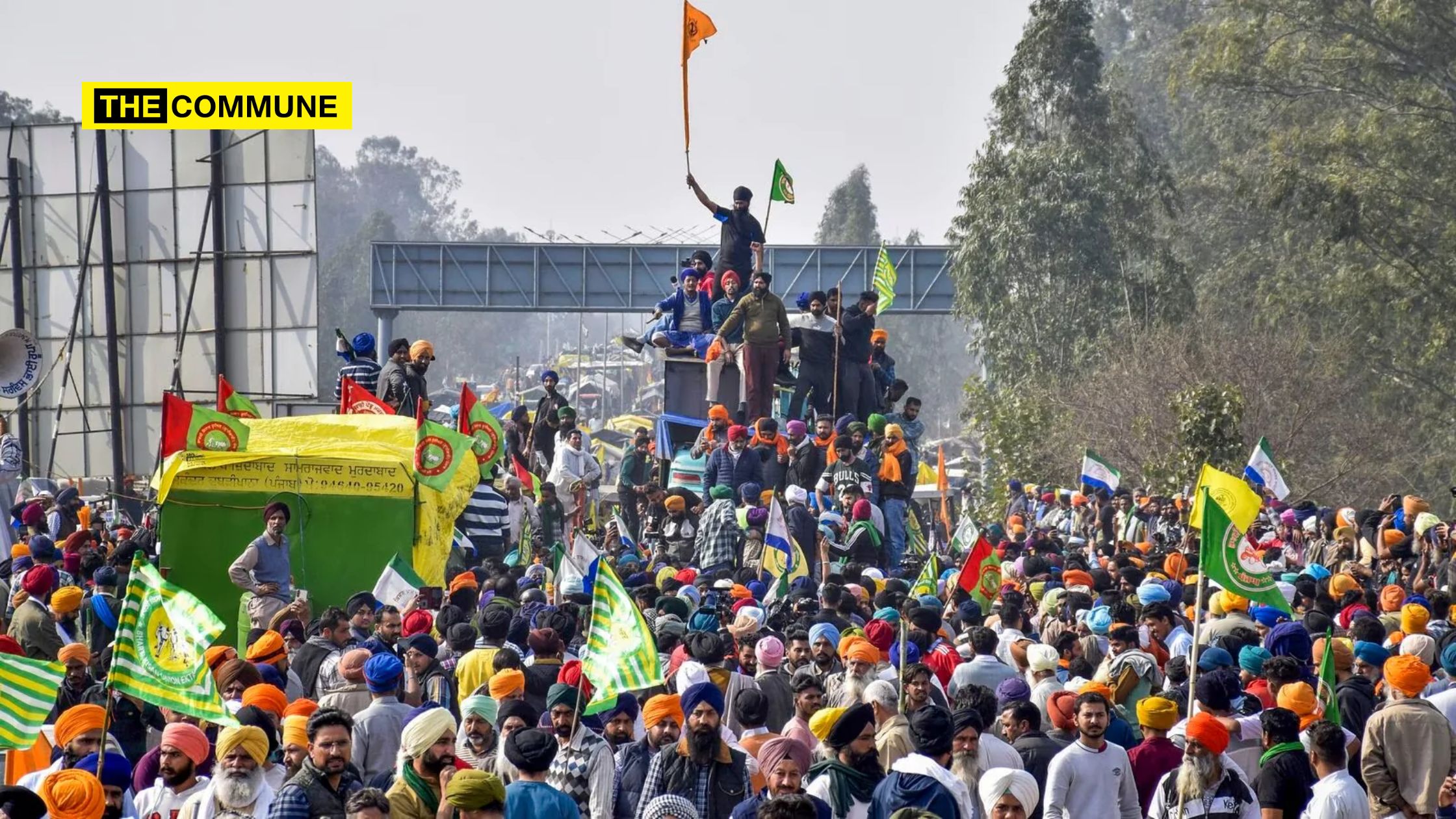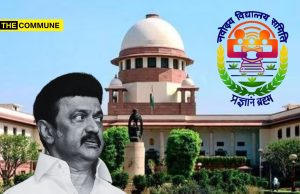
Image Source: KhalsaVox
Protest Fatigue is when people are tired of protests on moral grounds of the protest or lack of financial benefits. Moral ground commonly becomes a concern when the protests are orchestrated by external entities and propaganda and the protester feels a void and lack of energy in himself to protest.
In this article, we will try to discuss the concept of protest fatigue and how it is evident in the farmer protests happening in the northern part of our country in 2024. The first part of the article discusses protest fatigue around the world and the second part, we will discuss the farmer protests through the lens of fatigue.
Protest Fatigue
Here is a list of protests from across the world:
- A Trump supporter from 2020 protests says that they are funded to protest but their families suffer back there unless they all join the protest.
- A protester from Canada claims that the organizers who organize the protest are interested in the first couple of days, but then the care and support for the protesters fade away and they all are put in vain.
- In the U.K., anti-India protests failed to meet the expected number of protests, a senior community leader who helped organize the protest cited fatigue as a reason for the low turnout.
- The fact of the matter is many people cannot protest for extended periods because they need to return to their jobs and provide for their families.
- In Chile, unaddressed structural failures that protestors are attempting to leave thousands homeless and living in poverty, like economic inequality. The people who didn’t protest had a better standard of living than the people who did.
- The HashTag #protestisthenewbrunch trended on Instagram and Twitter around 2017 tells that protests have become a popular weekend activity more than a cause-driven one. This kind of culture was induced by negative elements that tried to instigate hate and skepticism in society.
- There are startups like My Civic Workout that are nurturing amateur protesters to become professional protesters in what they call “meaningful civil activism”. They also publish a list of protests they can become part of that are available online.
- In Brazil, the protest fatigue led to “Issue Fatigue”, where the protesters in Brazil are tired beyond the point where they are no longer concerned about the “issues” that the protests started for.
- In Venezuela, opposition party-fueled supporters, however, are exhausted after four months of street demonstrations and disruptions to daily life, which ultimately failed to make the ruling government accept opposition demands. Turnout at marches called by the opposition has fizzled in the last few weeks, and some people just want to return to work quickly in the country plagued with empty food shelves, runaway inflation, and a fourth straight year of recession.
- As the protest days go longer, keeping the supporters on the streets may become increasingly difficult, because of both increased repression and likely popular disillusionment. It is already showing signs of severe internal strains over issues such as whether or not to participate in any issues at all. Because of the people going away from protests, militants and violent extremists are being sought across the world for running protests. It just takes a minor trigger for a protest to change into violence in this case. The disheartening trend is that youth between 13-21 years old are lured into this in exchange for narcotics, clubs, and travel coupons.
In 2022 in the US, the National Policing Institute came up with a set of guidelines for managing communal riots, that they framed as Community Oriented Policing Services (COPS), which works under the guideline that some mass demonstrations are specifically planned with the intent of wreaking havoc and causing harm.
Violent acts during demonstrations, also commonly understood as riots, are not protected by the freedom of speech of a nation. This applies to the US Constitution’s first amendment and also to the Indian Constitution’s preamble.
Farmer Protest 2.0
With the “Protest Fatigue” stories from around the world, let’s look at the Farmer protest version 2.0 that’s happening in Delhi.
In the earlier protests in 2020, almost all the farmer organizations in Punjab, Haryana, and Western Uttar Pradesh, numbering more than 40, had come under the Sanyukt Kisa Morcha (SKM).
This time a breakaway faction of that umbrella body is spearheading the protests. It’s called Sanyukt Kisan Morcha (non-political) and excludes major farmer leaders and Kisan Mazdoor Morcha. This itself is an example proving the protest fatigue theory. Real farmers have to work. This is the sowing season and the seasons will not wait for protests to end. So the majority of farmers decide to withdraw. The cautious stance by some of the SKM leaders who have chosen to stay back indicates deep factionalism within farmer bodies.
The Seven Member Committee of SKM gives us some background on the protests.
- Jagjit Singh Dallewal (President BKU-Sidhupur): Dallewal maintains silence on the involvement of Khalistanis and other radicals in the farm protest and is not opposed to radical thought.
- Dr. Darshan Pal (President Krantikari Kisan Union) – Ex CPI (Maiost): On 14 January 2024, CPI (Maoist) said it was dismissing “Comrade Joseph (Darshan Pal)” for “anti-party factional activities” after his Naxal “links” were exposed.
- Atul Kumar Anjan (National general secretary of All India Kisan Sabha):
- Ex-President of AISF, and ran multiple protests across the country against CAA from 2019. He actively supported LGBTQ+ rights (The AISF actively supports LGBT rights). In 2022, he promoted AISF state committee member Nadira Mehrin became the first transgender person to contest in a student union election at Kerala University.
- Hannan Mollah: An ex-MP from CPI (Marxist), was also an ex-Waqf board president, in West Bengal. He was instrumental in bridging communication between Waqf board WB, Himachal, Chandigarh, and Punjab.
- Balbir Singh Rajewal (president BKU-Rajewal): Rajewal has been close to various political parties in the past, including Shiromani Akali Dal, Indian National Congress, and Aam Aadmi Party. He is an aspiring CM candidate for Punjab under the party Sanyukt Samaj Morcha. Contested in 2022 elections in 20 seats in Punjab and won none. Critics say that his involvement in the protests is to gain votes and not for the welfare of the farmers.
- Ashok Dhawale (National President of All India Kisan Sabha): An ex-AISF member and organizer of 2020 protests.
- Yogendra Yadav (President and founder of Swaraj India): Psephologist, was expelled from AAP.
- Gurnam Singh Chaduni: Chaduni contested in all 10 seats in Punjab, lost his own, and overall got 16000 votes across constituencies. He was a part of the 2020 protests and later protested on highways to demand MSP for sunflower seeds. Wrestler Sakshi Malik took to Twitter and demanded his release. He is not active in 2024, but very active in 2020 protests.
- Shiv Kumar Kakka: An MP who was detained in Bhopal for unconstitutional activities and then released.
Overall we see that other than 4-5 faces from 2020 rest didn’t even show up the Kisan Mazdoor Morcha is a new faction playing with SKM and we have to see the gravity of the elements involved in them. This time we see lesser enthusiasm shown by Khaps, the Jat community organizations that had massively mobilized during earlier protests.
In Haryana and Punjab, internet services have to be disrupted to curtail the riots that are happening, and that has put thousands of people’s lives and lives in jeopardy.
Despite the MSP being higher than global prices for wheat and rice, farmers often express dissatisfaction, advocating for higher MSP rates to improve their income prospects.
In India, agriculture contributes to 17% of the economy and 58% of the population is dependent on agriculture. That means roughly 70 crore people are dependent on agriculture and the number of people protesting is less than 0.005% of agriculturists who are particularly motivated by a specific section of ideology/ propaganda.
The late MS Swaminathan, a renowned agriculturist and the Father of the Green Revolution in the country, who was recently conferred the Bharat Ratna, chaired the National Commission on Farmers. The policy included asset reforms with respect to various natural resources, supply of good quality seeds, timely & adequate reach of institutional credit, coverage of farmers under a comprehensive national social security scheme, and effective implementation of MSP, among others.
It may be noted that this recommendation was not included by the UPA government in the National Policy for Farmers which was finalized in 2007, and a lot of that including the Kisan credit card, direct subsidy, and crop insurance were all introduced during the NDA government after 2014.
Soundar is a geopolitical enthusiast, based out of Ireland. His areas of interest include cyber, technology and its role in geopolitics.
Subscribe to our channels on Telegram and WhatsApp and get the best stories of the day delivered to you personally.




